
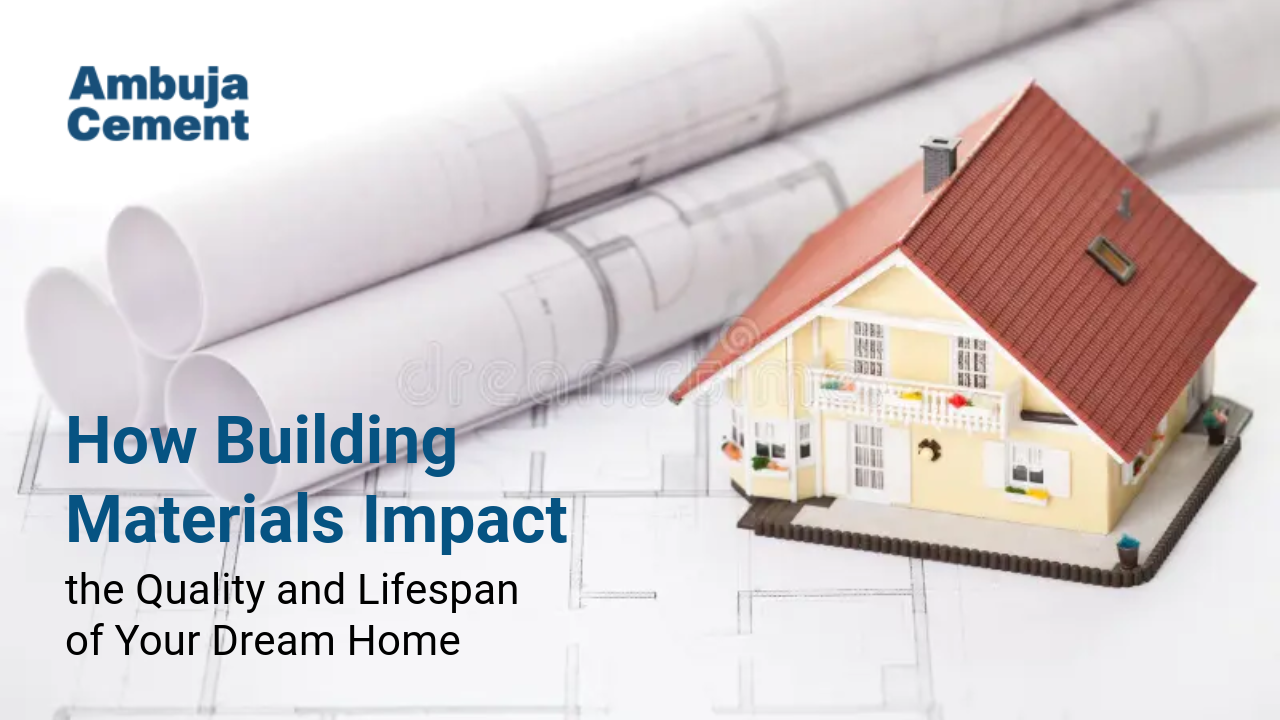
How Building Materials Impact the Quality and Lifespan of Your Dream Home
Building a home is one of the most exciting and equally overwhelming journeys you'll take. But while it’s easy to get caught up in choosing floor plans, paint colors, or kitchen fittings, your house's real beauty and strength lie in something far less glamorous: building materials.
Yep, those basic elements like cement, steel, and wood are what determine whether your home stands tall for decades or crumbles under pressure.
Let’s break it down in a friendly, no-nonsense way, so you can make smarter choices that’ll pay off for years.
The Foundation of Everything: Why Materials Matter
It’s a fact that it’s the ingredients that determine how a product turns out—too much or too little of even a single element, and it’s a disaster. The same logic applies to your house. The housing raw materials you pick affect how well your home holds up to weather, time, and everyday damage.
Your choice of materials doesn't just affect strength. It impacts everything from resistance to heat to resistance against damp, pollution, and even termites. That’s why it’s important to understand the options out there—and what they bring to the table.
1. Steel
Let’s start with one of the most powerful housing materials out there—steel. If you're building a home with multiple stories or in an earthquake-prone area, steel is your best friend. It’s super strong, can bear heavy weight, and resists pests and fire. The only downside? It can be pricey. But if you're looking for long-term durability, it's well worth the investment.
Stainless steel, in particular, resists corrosion, making it ideal for coastal or humid environments. It's often used in structural frameworks, giving your home a strong frame that won’t buckle under pressure.
2. Cement and Concrete
Cement might not look like much, but it’s the glue holding everything together. When mixed with sand and gravel, it becomes concrete: a fundamental element in any sturdy home. Concrete slabs, beams, and columns form the base and core of your house.
The strength of concrete depends on the mix. That’s why ready-mix concrete is becoming increasingly popular. It’s pre-mixed under controlled conditions to ensure consistent quality, and it's poured directly on-site, taking out the chances of errors and saving time. If you're all about efficiency and long-term stability, this is a win-win.
3. Bricks and Blocks
Bricks have been used for thousands of years—and for good reason. They’re solid, fire-resistant, and great at maintaining indoor temperatures. Plus, they give your home that timeless charm.
Blocks, on the other hand, are modern-day champions. Larger and lighter than bricks, they’re great for faster construction. Depending on the material—whether concrete, clay, or aerated options—they offer excellent insulation and soundproofing too.
4. Wood
Wood adds warmth and personality to a home, both structurally and aesthetically. It's versatile, easy to work with, and when sourced responsibly, it’s also sustainable. But it does need protection. Termites, moisture, and other damages can shorten its lifespan unless it’s treated or used in protected parts of the house.
Still, when used right—for framing, floors, or even accent walls—wood brings a natural charm that no other material can match.
5. Stone
Natural stone is about as durable as it gets. Granite, marble, limestone—each type brings its own strength and character. While heavier than other construction materials, stone offers unmatched resistance to wind, fire, and moisture. It's an ideal choice for exterior walls, walkways, and even fireplaces.
If you're planning a forever home, stone is worth considering for key features.
6. Aggregates and Binding Wire
Aggregates—those little bits of crushed stone, sand, and gravel—might look fragile, but they’re essential. They’re mixed with cement to form concrete and asphalt, providing the bulk and backbone to any structure.
Binding wire, meanwhile, ensures that steel reinforcements stay in place, especially in concrete work. It might seem minor, but without it, the whole structure could be compromised. Think of it as the stitching in your home’s structural fabric.
Choosing the Right Mix
Ultimately, every material has its own role in the grand scheme of your home’s construction. It’s not just about picking the strongest option, but the right combination for your weather, location, and budget. The best homes don’t just look good—they’re built on smart choices that ensure safety, comfort, and longevity.
And remember: not all construction materials are created equal. Always go for trusted brands and suppliers. Do your research. Ask questions. And don’t cut corners—what you save now might cost you double in repairs later.
Final Thoughts
When you're building your dream home, don’t just focus on the surface. Dive deeper into housing raw materials. Think about the materials going into your walls, foundation, and structure. The choices you make today will shape how your home performs—and how long it lasts for generations.

Cement Price Trends in 2025: What Every Homeowner Needs to Know
If one of your 2025 plans includes building or renovating your home, there's one topic you must have on your radar: cement price trends. Cement is the backbone of any construction project, whether you're laying the foundation of a dream bungalow or fixing up the family home. But with the ever-changing market landscape, understanding what's happening in the cement industry can help you make smarter, cost-effective decisions.
So, what’s going on with cement costs this year? Let’s break it down in simple terms.
A Gentle Rise on the Horizon
According to a recent report by CRISIL, cement price is expected to rise moderately, somewhere between 2% to 4%, in the current year. Now, before that causes you panic, let’s put it into perspective.
A 2–4% increase isn’t drastic, especially when compared to some uncertain years we’ve seen in the past. In fact, this slight uptick is actually good news for the overall health of the cement industry. It means companies will have a better sales realisation, allowing them to invest in quality, innovation, and production efficiency—all of which benefit you in the long run as a consumer.
But why this increase, and why now?
What's Driving the Price Hike?
There are a few key reasons behind the expected rise in cement cost this year, and they’re tied closely to broader economic trends and national priorities:
- Infrastructure Spending Is Up: The government has bumped up its budget for core infrastructure by a solid 10%. That’s huge. Think roads, bridges, railways, and urban development. Since infrastructure accounts for about a third of India’s domestic cement demand, this surge plays a major role in pushing prices slightly upward.
- Rural Housing Demand: A stronger-than-usual monsoon is expected this year, which tends to boost agricultural productivity. More money in the hands of rural households often leads to increased investments in housing. As rural housing demand rises, so does the need for building materials like cement.
- State-Level Investments: Budgets from 12 states that together make up around 65% of India’s cement demand show an 11% increase in infrastructure allocations. That’s another big boost for the industry.
The Competitive Landscape: A Double-Edged Sword
Despite these growth drivers, there’s a flip side. In some markets, prices of cement has remained low due to high competition. Companies looking out for market share have driven down prices, especially in areas where demand slowed early in the year. It’s a classic supply-versus-demand scenario.
Still, the second half of the year looks more promising, with rising demand expected to create some stability and potentially support a gentle climb in pricing. As a homeowner, this could mean that locking in rates earlier in the year might be to your advantage, especially if you're planning a large-scale project.
What Does This Mean for You?
You might be wondering, “Alright, but how does all this actually affect me when I'm building or renovating?” Good question. Here’s what to keep in mind:
- Plan Your Budget Accordingly: Even a 2–4% rise in cement cost can impact your total project budget if you're building something sizeable. Start by getting a few estimates now to understand your cost range.
- Factor in Regional Variability: Prices may differ across regions, depending on local competition and demand. If you're in an area experiencing a building boom, prices could be slightly higher than average.
- Consider the Quality of Cement You Choose: Don’t just go for the cheapest bag you can find. High-quality products like waterproof cement might cost a bit more up front, but they can save you money and headaches down the line—especially in areas prone to rain or humidity. Using brands like Ambuja Kawach cementensures greater longevity for your walls, foundations, and bathrooms.
Looking Ahead: What to Expect in 2026
The current rise in housing material prices is not expected to spiral out of control. Experts believe that the anticipated demand boost, driven by continued infrastructure spending and rural housing, will support a healthy, stable market into the year 2026.
However, the key watchword will still be competition. As companies continue to fight for a bigger slice of the market, prices may remain somewhat moderate, offering you some breathing room even as demand increases.
Final Thoughts
At the end of the day, building a home is about more than bricks and mortar—it's about smart decisions. Keeping an eye on cement cost, understanding what's driving price trends, and choosing the right materials like waterproof cement can make all the difference in the durability and cost-efficiency of your project.
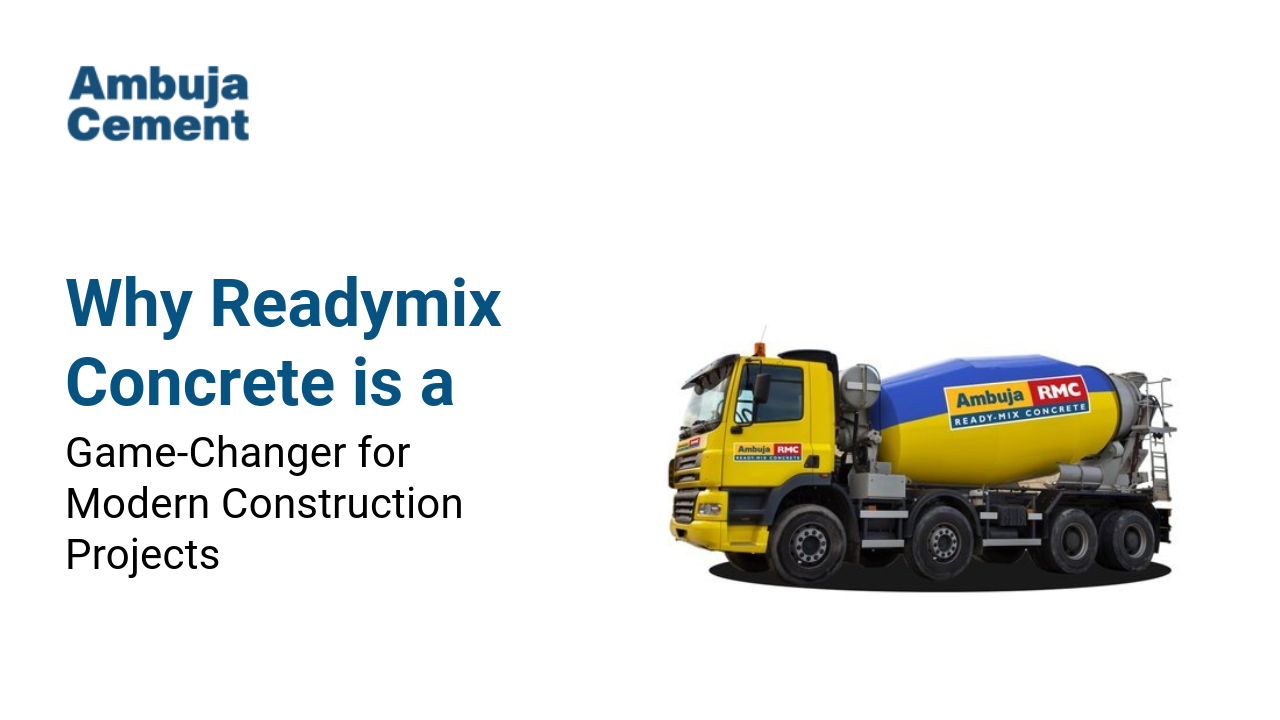
Know The Benefits Of Readymix Concrete Over On-Site Mixing
Concrete is everywhere—from the homes we live in to the schools we attend and the roads we travel. It's the backbone of modern infrastructure, silently holding our favourite places together. If you're planning a construction project—big or small—you’ll need to make one crucial decision: should you go with traditional on-site mixing or opt for readymix concrete?
If you’ve been wondering which option is best, you’re in the right place. Let’s break it down and explore why readymix concrete is becoming the go-to choice for homeowners, builders, and developers alike.
1. Accuracy That Builds Strength
When you rely on on-site mixing, you depend heavily on manual labor to get the proportions right. Unfortunately, this often leads to inconsistencies in the concrete mix. Uneven mixing of cement, gravel, and sand can negatively affect the overall quality of your structure.
With readymix concrete, you're getting a concrete mixture made in a controlled environment where every ingredient is measured with precision. The result? Stronger, longer-lasting structures you can depend on. It’s one of the key reasons more and more people are turning to professional concrete suppliers instead of trying to manage it all themselves.
2. Predictability Saves the Day
Anyone who's been through a construction project knows how unpredictable things can get—delays due to bad weather, labor no-shows, or just the logistics of getting materials on time. On-site mixing can make these issues even more stressful.
In contrast, readymix is delivered to your site ready for use, exactly when you need it. This streamlined approach cuts down on delays and helps you stick to your construction timeline. When you work with professional suppliers, you also reduce the chances of material wastage and unexpected expenses.
3. Cost-Effective in More Ways Than One
At first glance, on-site mixing might seem cheaper. But when you factor in labor costs, equipment rentals, fuel, storage, and clean-up, the expenses quickly add up.
Readymix concrete simplifies your budget by removing many of these hidden costs. With less labor and no need for on-site batching machine, you save time and money. Since the mix is precise, you also reduce wastage—meaning you only pay for what you use.
4. Reduced Dependence on Labor
On-site concrete preparation is labor-intensive. You need skilled workers to measure, mix, and monitor quality. That’s a lot of moving parts—and a lot of room for error.
By choosing readymix concrete, you take a major load off your labor force. The concrete arrives at your site ready to pour, allowing your team to focus on structure and finishing. This means faster project completion with fewer quality concerns.
5. A Safer Work Environment
Safety should always be a top priority on any construction site. On-site mixing increases workers’ exposure to raw materials like cement and sand, which can cause dust, skin irritation, or breathing issues. It also involves heavy lifting and repetitive tasks that increase the risk of injury.
Readymix concrete drastically reduces these risks. Because it’s prepared off-site, your crew spends less time handling raw materials and more time doing what they do best—building safely.
6. A Cleaner, More Efficient Site
If you've ever been on a site with on-site mixing, you’ve seen the mess—spilled materials, leftover bags, tools scattered around. It’s not just unsightly; it’s inefficient and dangerous.
Since readymix concrete is pre-mixed, there's no mess from measuring and blending. Your site stays cleaner, which not only improves safety but also boosts efficiency. With fewer obstacles, your team can work faster and smarter.
7. Better for the Environment
Sustainability is no longer optional—it’s a responsibility. Luckily, readymix concrete supports greener building practices. Many mixes incorporate recycled materials like fly ash or slag, reducing the strain on natural resources.
Plus, since it's mixed in a centralized plant, there's less waste and lower emissions than if you were mixing multiple batches on-site. When you choose a forward-thinking concrete company, you're not just building for today—you're building responsibly for tomorrow.
Ambuja Cement – Your Trusted Partner in Construction
When it comes to sourcing quality concrete, one name that consistently stands out is Ambuja Cement. As one of India's leading concrete suppliers, Ambuja Cement is committed to innovation, sustainability, and customer satisfaction.
What makes Ambuja special is its all-around approach. Their readymix concrete solutions are tailored to meet the unique demands of every project—from residential to large-scale commercial developments. Ambuja’s quality control processes, technical support, and timely delivery ensure your structure stands the test of time.
The Final Word
Choosing readymix concrete over traditional on-site mixing isn't just a trend—it's a smarter, safer, and more sustainable way to build. You get consistency, reduced labor needs, fewer delays, and lower long-term costs. Plus, your construction site stays clean and your team stays safer.
So next time you’re planning a construction project, think ahead. Work with experienced concrete suppliers who can deliver on quality and timing. Because in construction, the right foundation makes all the difference.
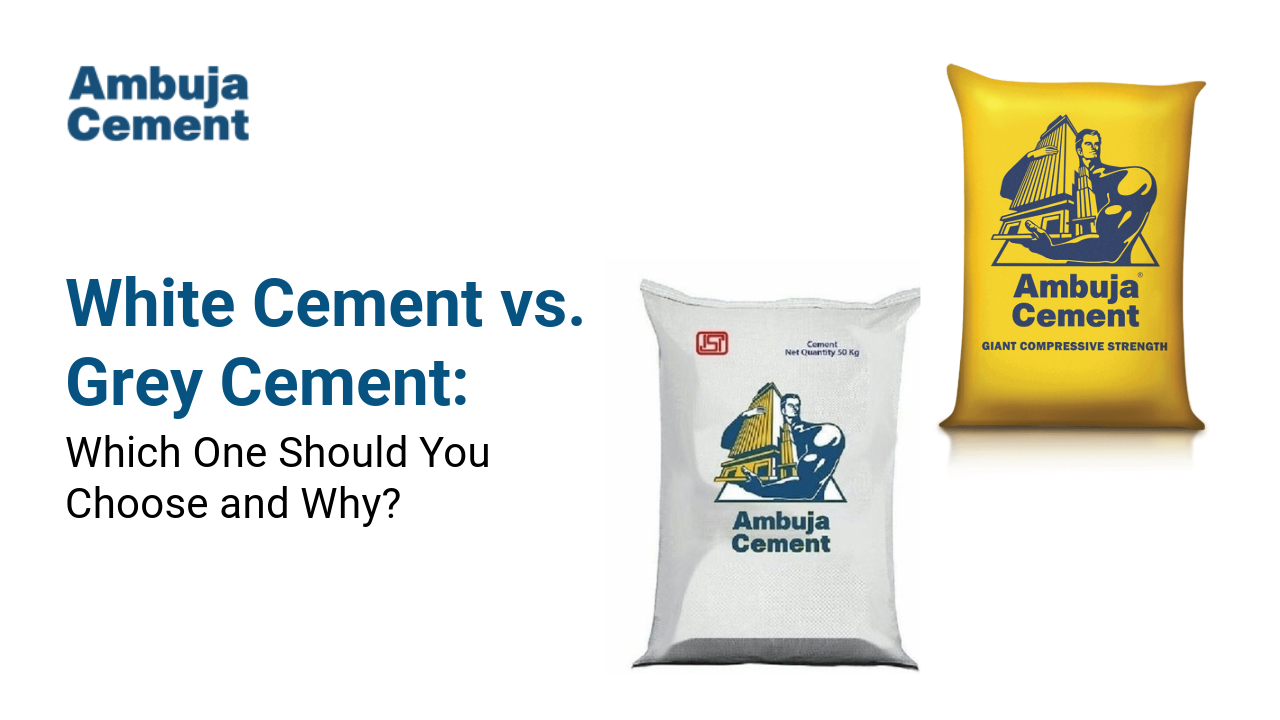
Get Crafty at Home with These White Cement Decor Ideas
Looking for a fresh, creative way to spruce up your home? Whether you're into sustainable living, minimalistic design, or just want to try something new, white cement decor could be your next favorite DIY trend. It's clean, durable, and surprisingly versatile, not to mention super fun to work with. If you’ve never considered crafting with white cement before, now’s the perfect time to give it a try!
In this blog, we’ll walk you through some stylish and simple DIY decor ideas you can create at home. Trust us, these projects will not only elevate your space but also make you feel like a design genius!
Why White Cement?
Before we dive into the DIYs, let’s talk about why white cement is having a major moment in home decor. Unlike traditional cement, white cement has a smoother texture, brighter color, and better finish. It’s ideal for modern, minimal designs and works best for making both functional and decorative items. Whether you want a rustic planter or a chic candle holder, white cement gives you a sturdy base and a clean, contemporary look.
And the best part? It’s affordable. If you're worried about the cement price, rest easy—most DIY decor items require just a small amount, making this a budget-friendly way to add charm and style to your home.
1. DIY Cement Planters – Perfect for Plant Parents
If you love plants, this one’s for you. Instead of sticking to the usual plastic or ceramic pots, why not craft your own cement planter? It’s sustainable, trendy, and adds a handmade touch to your green space.
Here’s how to make your own:
- Grab a large plastic pot and coat it with oil on the inside.
- Mix products like Ambuja Purasand with water, following the instructions to get a smooth consistency.
- Pour the mixture into your oiled pot.
- Insert a smaller pot inside and weigh it down with rocks.
- Let it sit overnight.
- Once hardened, gently remove it from the mold.
- Sand the edges and paint it however you like!
The result? A sleek, customized planter that’s both eye-catching and eco-conscious.
2. Cement Candle Holders – Chic & Functional
Candles bring warmth and coziness to any home. But if you’ve been using delicate or store-bought holders, you know how easily they break. Enter DIY cement candle holders—sturdy, stylish, and super easy to make!
Here's what you'll need to do:
- Oil the inside of a disposable paper cup.
- Mix your white cement with water and pour it into the cup.
- Press a small bowl or object into the center to create space for the candle.
- Let it sit overnight.
- Remove it from the mold and use sandpaper to smooth out any rough edges.
Want to make it more “you”? Paint it with metallic tones or pastel shades to match your home’s vibe.
3. Desk Accessories – Elevate Your Workspace
Tired of boring plastic trays and organizers on your desk? Time to replace them with sleek, custom-made cement accessories. Think pencil holders, trays, paperweights—anything that adds a touch of modern artistry to your workspace.
How to make your own:
- Find molds in different shapes—old trays, cups, bowls—get creative!
- Pour in the cement mix and adjust as needed.
- Add weights or press objects into the mix to shape curves and contours.
- Leave it to dry overnight.
- Sand, polish, and paint to match your decor.
Creating these pieces is incredibly satisfying and makes working at your desk a little more enjoyable every day.
Why DIY With White Cement?
Besides the obvious aesthetic perks, crafting your own decor lets you personalize your space like never before. Every piece tells a story, reflects your personality, and gives you the joy of creating something from scratch. Plus, it's a sustainable choice—white cement crafts are reusable, recyclable, and require minimal resources.
If you're unsure where to start or how much material you’ll need, checking the cement bag price for a small DIY project can help you plan your budget. The best part? You’ll likely have plenty left over for more projects!
Final Thoughts
Getting crafty at home doesn’t have to involve expensive tools or fancy materials. With a little creativity, patience, and a bag of white cement, you can turn everyday spaces into artful expressions of your personal style.
Ready to get started? Grab some Ambuja cement, pick your project, and start creating. Who knows? Your next favorite home accessory might just be one you make with your own two hands!

Red Bricks or Cement Blocks: Which Building Material Is Best for You?
When it comes to starting any construction project, one of the biggest decisions you’ll face is choosing between red bricks and cement blocks. Both are time-tested materials with unique benefits, but which one really suits your needs best? That’s exactly what we’ll break down in this post, helping you make the most informed and cost-effective choice.
Let’s get into it!
What Are Cement Blocks?
You’ve probably seen them around—they're big, grey, and solid. Cement blocks, also known as concrete blocks or concrete masonry units, are made from a mixture of cement, sand, aggregate, and water. They come in a variety of sizes, most commonly 4-inch, 6-inch, and 8-inch blocks. These are stacked and joined using mortar to form strong and durable walls.
Cement blocks are gaining popularity fast, thanks to their strength and versatility. And with the right concrete testing, you can be sure you're working with materials that meet all the required standards for your project.
What About Red Bricks?
Red bricks are the classic choice. Think of any old structure or even your grandparents’ home—it was probably built with them. Traditionally made from clay and baked at high temperatures, red bricks are rectangular in shape and laid in courses using mortar.
They’re known for their earthy appearance and long history, but modern construction demands sometimes require something stronger and quicker to work with. That’s where the comparison gets interesting.
Key Differences Between Cement Blocks and Red Bricks
1. Strength and Durability
Cement blocks have a clear advantage when it comes to compressive strength. They’re designed to withstand seismic loads and harsh weather conditions. With proper concrete testing, you can rest assured that the blocks meet performance standards for both residential and commercial projects.
On the other hand, red bricks are durable in their own right but tend to weaken over time, especially when exposed to moisture or heavy loads.
2. Cost and Efficiency
Time is money in construction, and cement blocks help you save on both. Since they are larger than red bricks, fewer are needed to cover the same area. This not only cuts down on materials but also reduces labour time significantly.
Red bricks, being smaller and manually intensive to produce, take longer to lay and generally cost more in both time and labour.
3. Speed of Construction
Need your project done on a deadline? Cement blocks are your best friend. Builders can cover more wall space quickly due to their size and uniformity.
Klinn Bricks, while classic, take much longer to install. The smaller size means more individual bricks per square metre and slower progress overall.
Insulation, Soundproofing & Fire Resistance
Here’s where cement blocks really shine:
- Thermal insulation: Thanks to their density and hollow-core design, cement blocks offer better thermal resistance, helping regulate indoor temperatures and cut down on your energy bills.
- Soundproofing: If you're building in a noisy urban environment, cement blocks naturally block sound better than red bricks.
- Fire resistance: Cement blocks are non-combustible and offer higher fire resistance, adding an extra layer of safety.
Red bricks, while offering some insulation, generally don’t perform as well in these categories. They’re dense but not as effective at keeping out heat or sound.
Design and Versatility
Modern architecture celebrates creativity, and cement blocks offer a wider range of design options. They can be molded into various shapes, sizes, and even colours. Whether you're going for an industrial look or a smooth, painted finish, cement blocks offer flexibility.
Red bricks still carry that timeless charm and rustic vibe, but come with limitations in colour and size. So, if you're looking to stand out with custom features, cement blocks give you more freedom to innovate.
Sustainability and Maintenance
Cement blocks are increasingly manufactured with eco-friendliness in mind. Many are made using locally sourced and recycled materials, which reduces the carbon footprint. Their longevity also means less need for replacements and repairs over time.
Meanwhile, the production of red bricks often involves the depletion of fertile topsoil and releases more carbon during the baking process. Plus, red bricks are more prone to moisture absorption, leading to mold or pest issues if not well-maintained.
In terms of maintenance, cement blocks win again—they’re resistant to pests, rot, and water damage, which helps lower long-term upkeep costs.
So, Which Is Best for You?
It all comes down to your priorities:
- Want a faster, stronger, and more cost-efficient build? Cement blocks are the way to go.
- Looking for a traditional, warm design and don’t mind the higher labour and maintenance costs? Red bricks might still be a good fit.
If you're still unsure, consider speaking to a local architect or contractor who can provide project-specific recommendations. And always ensure your materials go through thorough proper construction testing for safety and quality assurance.
Final Thoughts
Choosing between red bricks and cement blocks is a crucial decision, and there’s no one-size-fits-all answer. But by weighing the factors—strength, cost, design flexibility, insulation, and sustainability—you can confidently select the material that matches your vision and budget.
So, whether you're building a cozy cottage or a high-rise office space, make sure your foundation is not just strong—but smart.
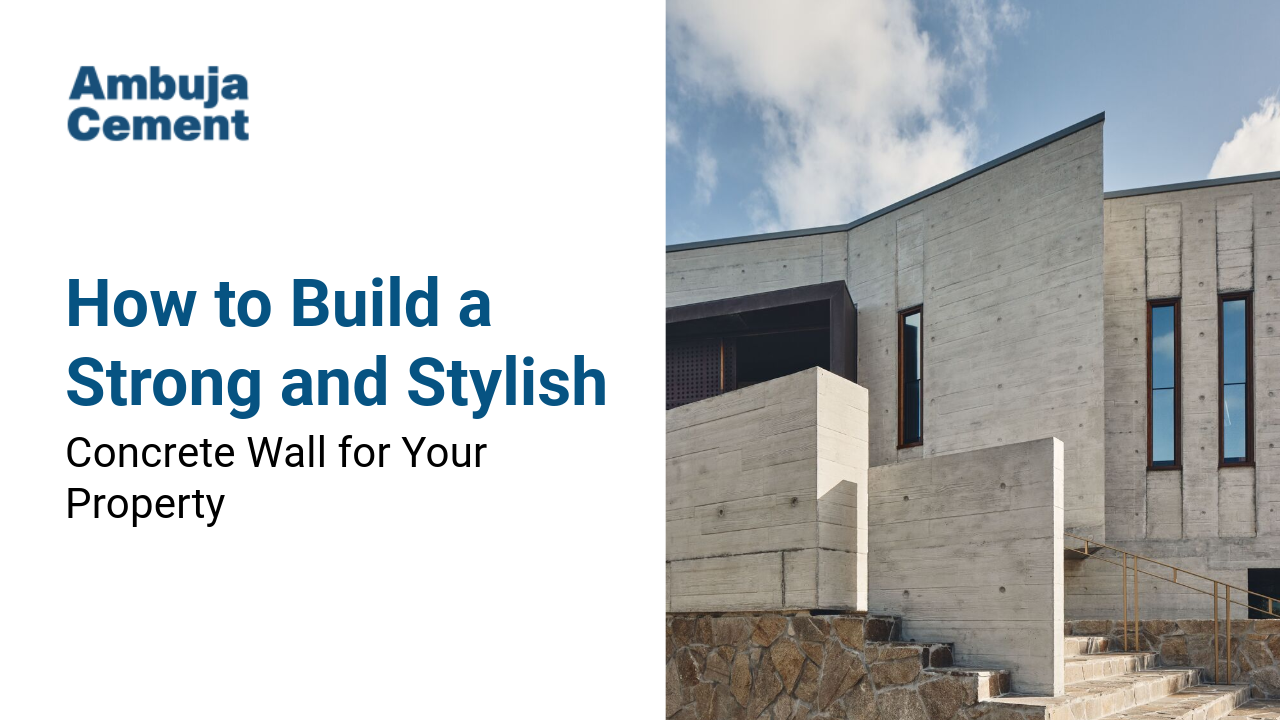
Concrete Wall Solutions for Modern Homes: Durable, Safe, and Stylish
In today’s fast-paced world, building a home isn’t just about four walls and a roof—it’s about smart choices. You want a home that looks beautiful, stands strong for decades, and keeps you and your loved ones safe. That’s where concrete wall solutions step in. If you’re planning a new home or renovating an existing one, choosing the right walling material can make all the difference.
Let’s talk about why concrete walls are becoming the go-to solution for modern homes in India and how they bring together durability, safety, and style in a way that’s hard to beat.
Why Choose Concrete for Your Walls?
You might be wondering, “Why concrete?” It’s a fair question—after all, there are a lot of materials out there. But concrete brings something special to the table: strength and versatility. Whether you're building in a high-traffic urban zone or a peaceful suburban neighbourhood, concrete walls provide the resilience you need in a modern structure.
Not only are they built to last, but they also resist heat, pests, moisture, and even extreme weather conditions. And the best part? They require minimal maintenance. Think of it as a one-time investment that pays off for years to come.
A Modern Marvel: Cement Wall Panels
Gone are the days when concrete meant grey, cold, and industrial. With the evolution of construction formwork and advanced casting techniques, you can now get sleek, stylish wall panels that look as good as they perform. Whether you want a minimalist modern aesthetic or something more traditional, these panels can be customized in finishes, textures, and colors to suit your taste.
Such formwork technology has made installation easier and faster, cutting down on labor time without compromising on quality. You can have your dream home built quicker than you imagined—without the mess and delays of traditional brick-and-mortar methods.
Energy Efficiency Meets Modern Design
Modern homes aren’t just about structure—they’re also about comfort. With insulated concrete panels, your home stays cooler in the summer and warmer in the winter. That means lower energy bills and a smaller carbon footprint. And if you’re someone who enjoys peace and quiet, you’ll love the added benefit of soundproofing. It’s especially useful in crowded neighborhoods or near busy roads.
Now, let’s talk money. The ready mix concrete might at first seem a bit more than conventional materials, but when you factor in the long-term benefits—reduced maintenance, better insulation, and faster installation—it’s actually a budget-friendly choice. Plus, bulk purchasing and efficient design can help you stay well within budget.
Where Can You Use Concrete Wall Panels?
You’re not limited to just exterior walls. These versatile panels can be used across various parts of your home:
- Living Room Dividers: Add a textured or patterned panel to create an elegant partition between open spaces.
- Bathrooms and Wet Areas: With their moisture resistance, concrete panels are perfect for places prone to dampness.
- Facade Design: Give your home an architectural edge with stylish, modern exteriors using decorative concrete panels.
- Garden Walls: Create a sophisticated boundary with concrete that complements your landscaping.
Each of these blends functionality with aesthetics, giving your home that polished, contemporary look you’ve been dreaming of.
Low Maintenance, High Rewards
Let’s be honest—no one wants to spend weekends patching up walls or dealing with water damage. One of the biggest advantages of concrete walls is how little maintenance they require. A simple wash now and then keeps them looking new. If you ever want a change, just paint over them with a weather-resistant coat for a fresh vibe.
And if a panel ever does show a crack or chip? It’s quick to repair with readily available cement-based compounds. No lengthy renovations or huge bills—just simple, effective upkeep.
Final Thoughts
When it comes to building your dream home, don’t settle for less. Concrete wall solutions offer a rare combination of strength, safety, style, and sustainability. Whether you're looking for efficiency, longevity, or modern design appeal, these panels deliver on all fronts.
So go ahead and choose a material that keeps your dream home standing and innovative to face the coming years. Your perfect home deserves the perfect walls, and now you know just where to start.
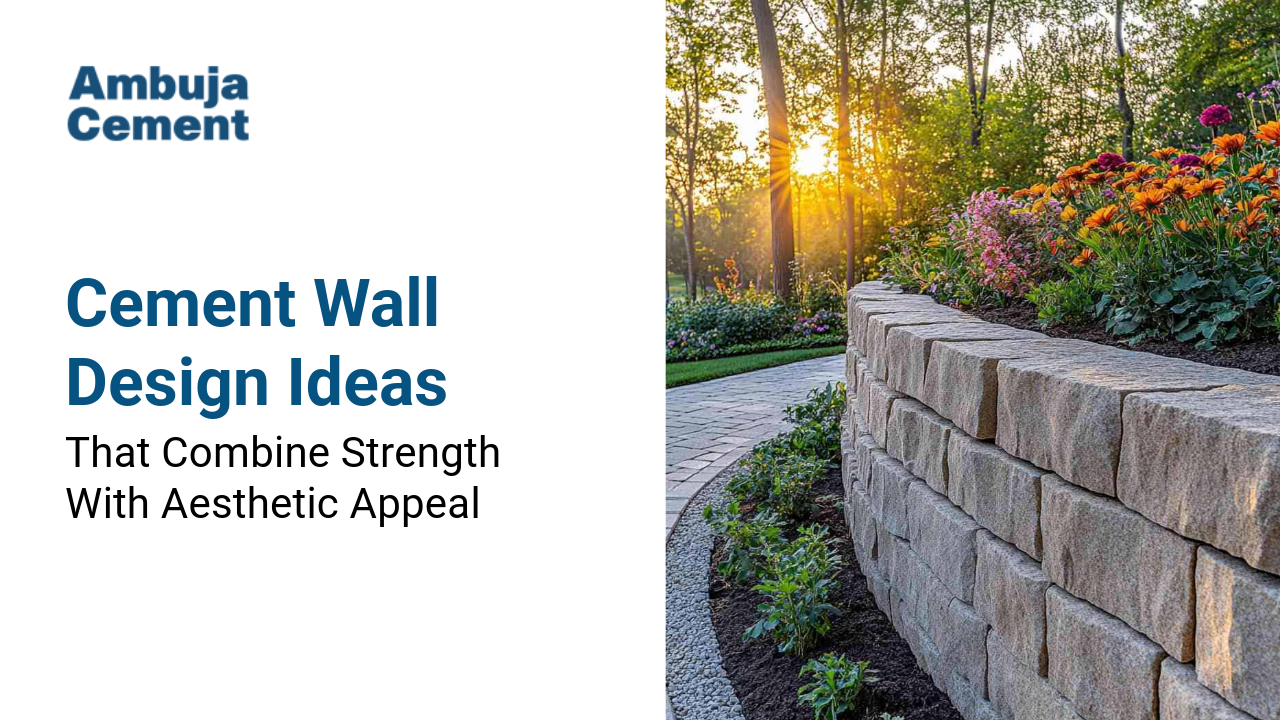
Cement Walls in Contemporary Homes: Style Meets Strength
When you think about modern homes, what’s the first image that comes to mind?
Sleek lines, minimalistic aesthetics, and large windows?
Cement wall surfaces add a bold statement of modern designs and unmatched durability to your living space. It creates the perfect medium, where form meets function, and traditional materials like concrete are getting a fresh new spin.
Concrete is no longer just a base material; today, it's taking center stage in home designs, thanks to improvements in construction and design. If you’re in the process of building or renovating, it’s time to consider this game-changing option.
Why Cement Walls Are Taking Over Modern Homes
Wondering why suddenly cement wall panels have become so popular? For their versatility and strength. These walls are just as tough as they're stylish. Whether you're aiming for an industrial loft look or a minimalist space, cement fits right in.
Plus, with this generation of homeowners focusing on eco-friendly and long-lasting choices, cement is leading the charge. It’s a good regulator of internal and external temperatures, mold, and even extreme climates. From tropical downpours to scorching heatwaves, it stands firm.
Built to Last (and Look Good Doing It)
Cement walls don’t age poorly. Unlike drywall, which may warp, crack, or erode over time, cement panels keep their form for decades. They require minimal repairs, just a little routine cleaning and the occasional looking to keep them in top shape.
Quick Install, Big Impact
If you're worried about time or labor, cement walls are your solution. These panels are pre-made in factories. This means they’re manufactured under controlled conditions, ensuring top-tier quality. Once they're ready, they’re transported and installed quickly on-site, cutting down your construction time and stress levels.
This efficiency also appeals to contractors and construction material suppliers alike. Everyone benefits from faster turnarounds, cleaner installation processes, and fewer delays due to weather or on-site conditions.
A Perfect Fit for Every Room
What’s also exciting is how flexible cement panels are in terms of design. You’re not limited to just exterior walls. These panels are making their way indoors, creating stunning feature walls in living rooms, bathrooms, and even kitchens.
Cement walls are also soundproof, meaning excellent noise reduction and leak resistance. This makes them a fantastic option for home offices, music rooms, or just peaceful, quiet living.
Eco-Friendly and Energy Efficient
More and more, homeowners are becoming conscious of their environmental impact. Cement panels are not only durable—they're also recyclable at the end of their life cycle. So if you ever do decide to remodel or renovate, you’re not contributing to construction waste.
Moreover, insulated cement panels can significantly improve your home’s energy efficiency. They help maintain indoor temperatures and reduce your reliance on heating or cooling systems, keeping your energy bills lower and your carbon footprint smaller.
What to Keep in Mind Before Choosing Cement Walls
You’ll want to consider a few factors before diving in. Budget is a big one—cement walls may have a higher upfront cost compared to traditional materials, but the long-term savings in maintenance and energy are worth every penny.
You’ll also want to connect with experienced construction material suppliers such as Ambuja, who understand the nuances of working with cement wall panels. They can help you choose the right finish, thickness, and installation method for your specific project.
Final Thoughts
Cement walls are more than just a trend—they’re a revolution in contemporary home design. With their seamless blend of beauty, strength, and sustainability, they offer a smart solution for modern living.
If you're looking to build a home that not only looks good but also stands the test of time, it’s time to explore the possibilities of incorporating concrete wall panels into your space.
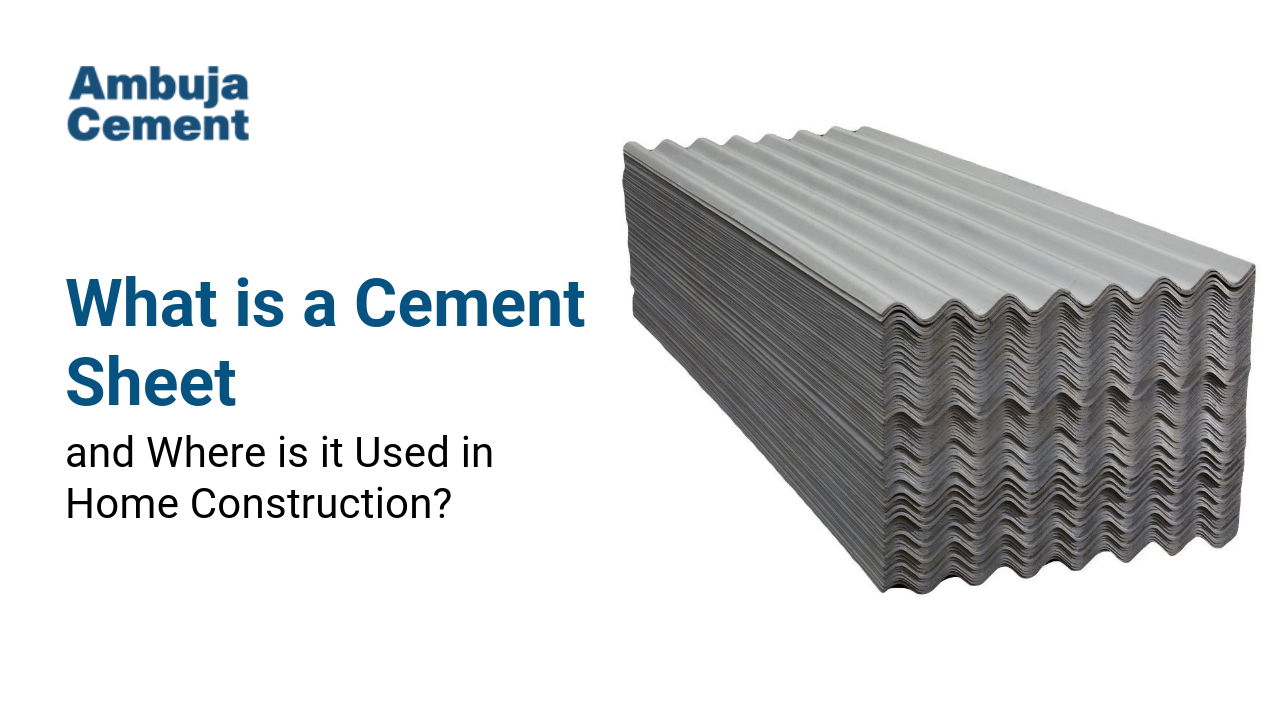
How to Use Cement Sheets for Durable and Cost-Effective Construction
Planning a building project or aiming for something that’s both long-lasting and budget-friendly? Then let’s talk about a material that’s changing the face of construction: the cement sheet. Whether you're working on a building, a warehouse, or even a residential space, using cement sheets can be a smart move if durability, versatility, and affordability top your list of priorities.
Let’s walk you through what makes this material such a strong contender in today's concrete construction landscape—and how you can make the most of it in your project.
What Is a Cement Sheet, Exactly?
A cement sheet is a flat panel made from a blend of Portland cement, sand, cellulose fibres, and sometimes other reinforcements. It’s manufactured under high pressure to form a strong, weather-resistant board that’s ideal for roofing, cladding, and even internal wall linings.
This material is particularly popular in agricultural and industrial spaces due to its rugged nature and moisture resistance. But don’t let that fool you—it’s also got serious potential for modern homes and smaller structures like garages and workshops.
Why Builders Love Cement Sheets
So, why are cement sheets becoming a staple in the building world? Here are some solid reasons:
1. Exceptional Durability
One of the top perks of this material is how long it lasts. Unlike wood, which can rot or warp, or metal, which may rust, a cement sheet is practically immune to harsh weather, temperature swings, and most environmental stressors. In fact, it can stand strong for 50 years or more with minimal upkeep.
That makes it a go-to for anyone who wants to invest in a structure that won’t demand constant repairs or replacements.
2. Moisture Resistant
If you’re building in a climate where humidity is a concern, you’ll be glad to know that concrete sheets absorb excess moisture and release it gradually. This prevents the buildup of harmful damp, great news for places that need to keep special equipment, or even just your home.
In places where traditional roofing might fail to handle the internal and external moisture, this is a step up to the challenge without breaking a sweat.
3. Low Maintenance, High Performance
Here’s something every busy builder or homeowner will love: once installed, cement sheets require almost no maintenance. Just give them a rinse every so often, and they’ll keep performing as good as new.
No painting. No sealing. No fuss. And when you do need to give them a clean, a little water will do the trick, or a pressure wash will do just fine.
Cost-Effectiveness Without Compromise
You might assume that something this sturdy would come with a heavy price tag. But here’s the surprise: concrete sheets are incredibly cost-effective. Compared to alternatives like steel sheeting, they’re much more affordable and outlast most other roofing materials.
This is a win-win—you save on initial costs and enjoy long-term savings on maintenance and replacement.
A Helping Hand with Wall Plastering
When used as internal wall boards, cement sheets also make wall plastering easier and more reliable. Their smooth, strong surface is perfect for applying plaster, leading to a cleaner finish with fewer cracks or inconsistencies over time.
If you’ve ever struggled with uneven or fragile walls during a plastering job, using cement sheets as a base layer can make a big difference.
Aesthetic Versatility
Think cement sheets are just plain grey slabs? Think again. Today’s versions are available in a range of colours to suit all sorts of architectural designs.
Popular options include anthracite, sandy brown, and natural grey. So, whether you're aiming for an industrial look or a countryside feel, you can find a cement sheet to match your vibe.
Sustainability: Another Big Win
We all want to reduce our environmental impact, and building materials play a huge part in that. The good news? Cement sheets are a greener choice. They’re made with low energy consumption, last a long time, and are 100% recyclable at the end of their life.
In terms of concrete construction, few materials offer the same combination of strength and sustainability. If you're building with the environment in mind, this option ticks all the right boxes.
Where to Use Cement Sheets
You can use cement sheets in all sorts of places, including:
- Roofs for buildings like homes and offices
- Cladding for warehouses or commercial units
- Wall linings in garages, workshops, and home offices
- Soundproofing and insulation for indoor spaces
- Durable baseboards for wall plastering
Thanks to their adaptability, they’re just as useful in residential renovations as they are in large-scale industrial builds.
Final Thoughts
If you’re planning your next concrete construction project and need a material that combines resilience, cost-efficiency, and versatility, cement sheets are hard to beat. They’re reliable, low-maintenance, and offer excellent value for money. Plus, they look great and perform even better—whether you're re-roofing a shed, insulating a barn, or cladding a warehouse.
Make sure to reach out to trustworthy construction material suppliers like Ambuja to get the best quality and support. With the right advice and a few well-placed panels, you’ll be well on your way to building something that stands the test of time, both in style and strength.
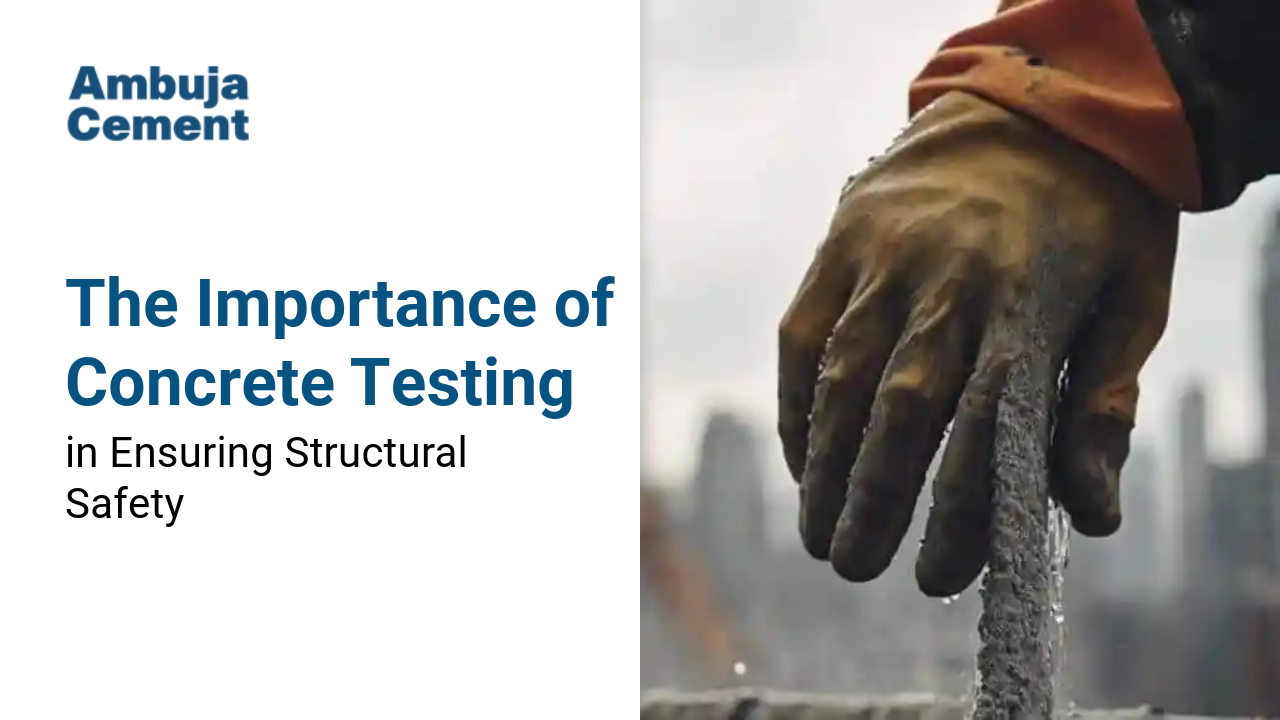
The Importance of Concrete Testing Before Starting Your Building Project
Thinking of starting a building project, there's one critical thing you absolutely can't afford to overlook: concrete testing.
Sure, it may not be the most glamorous part of construction, but don’t underestimate how vital it is. Concrete forms the very backbone of any structure. It's the material that holds everything together. So, wouldn't you want to make sure it's strong, reliable, and long-lasting before you pour a single batch?
Let’s break it down together—why this matters, what can go wrong if it’s ignored, and how it helps you build not just smarter but safer.
What Is Concrete Testing, Anyway?
Think of concrete testing as a health check-up for your construction materials. It's the process of assessing the strength, durability, consistency, and overall quality of the concrete you plan to use.
You can run these tests before pouring, during curing, or even after everything's done, just to ensure the final product meets the required standards. The goal is simple: make sure that what you're building will stand the test of time, and weather, pressure, and everything else life throws at it.
Why Should You Care?
Because you're investing time, money, and effort into this project. The last thing you want is for your building to start showing signs of damage just a few months or years down the line.
Imagine pouring your foundation, only to find out later that the concrete mix was too weak, porous, or water-prone. That could mean scaling, cracking, bending slabs, or worse—major structural failure.
A lot of disasters in construction history could’ve been avoided with timely concrete testing. Trust us, it's better to be safe than spend thousands on repairs or, even worse, put lives at risk.
What Happens When You Skip It?
When corners are cut and testing is skipped, decay sneaks in. It doesn't take long before signs start showing—white salt deposits, surface crumbling, or large fractures. In extreme cases, slabs bend or even separate entirely. These aren’t just issues; they’re ticking time bombs. That’s why testing is as much about protection as it is about prevention.
So, What Are the Benefits?
Glad you asked. There are several reasons why this step is non-negotiable:
- Optimized Efficiency: When you test your mix early, you can tweak and improve it. The result? A high-quality readymix concrete that sets just right, with minimal defects and fewer hiccups down the line.
- Integrity and Safety: Structures that meet legal and engineering standards offer peace of mind. It’s not just the rules—you’re ensuring every person who uses the space is safe.
- Identifying Root Causes Early: If something feels off, early testing can help pinpoint the exact issue. That way, you fix it before it snowballs into a bigger problem.
- Reputation Building: Projects that stand strong speak volumes. Happy clients turn into loyal clients—and glowing recommendations follow.
Tests You Should Know About
There are a variety of tests available, both on-site and in labs. Some focus on fresh concrete, others on cured samples. Here are a few key types:
- Compressive Strength Test – This tells you how much load your concrete can take before it cracks. Vital for any structure meant to bear weight.
- Workability (Slump) Test – Ever wonder how easy your concrete is to pour and shape? This test helps determine if your readymix concrete is too stiff or too runny.
- Air Content Test – Measures trapped air in the mix. Too much or too little can affect durability.
- Water Penetration Test – Especially useful for basements and foundations. It shows how waterproof your concrete really is.
- Flexural Strength Test – This evaluates how well your concrete resists bending. It’s a great indicator of long-term durability and crack resistance.
Doing It Right
Testing only works if it's done properly. Here are a few tips:
- Make sure the equipment used is calibrated and maintained.
- Use certified technicians—accuracy matters
. - Apply multiple methods for a well-rounded view.
- Stick to standard procedures, like ASTM or other local building codes.
Final Thoughts
In construction, there are things you can risk—and things you absolutely can’t. Skipping concrete testing falls in the latter category. Whether you're a builder, dealer, or property owner, taking the time to check your materials before you build could mean the difference between a strong legacy and a costly disaster.
So the next time you start a project, ask yourself: Is your concrete really ready? A simple test could save you years of headaches—and make sure your building stands tall, proud, and safe for generations.
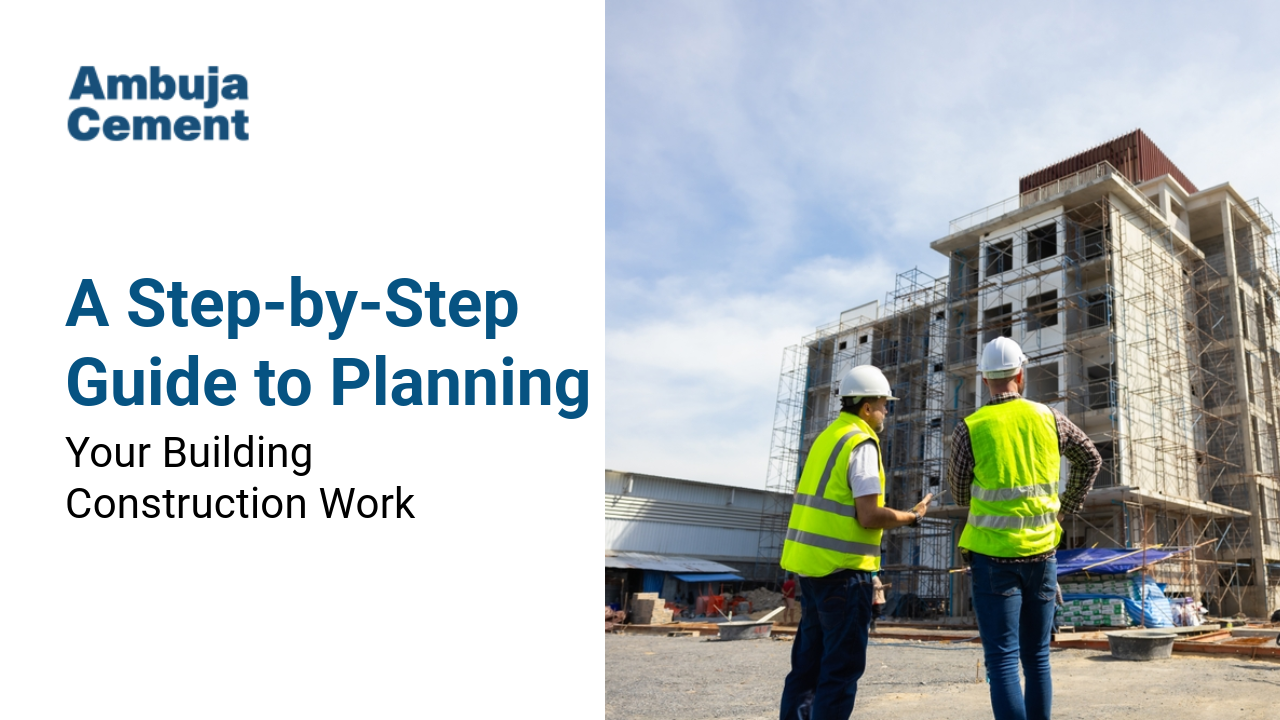
A Step-by-Step Guide to Building Construction Work for First-Time Homeowners
Building your own home is one of the most exciting journeys you'll ever take. It’s not just a structure of bricks, it’s your future and a reflection of who you are. But if you’re a first-time homeowner, the process can feel overwhelming. What happens first? How do you stay on top of everything? And how do you manage your home construction cost without unexpected surprises?
Don’t worry. We’ve got you covered with this friendly, step-by-step guide to help you understand the essential stages of building construction work. When you know what to expect, you can plan better, stay in control, and actually feel at ease with the process of creating your dream home.
Step 1: Laying the Foundation
Everything begins with the ground beneath your feet. Once you’ve selected your plot, the first thing your construction team will do is clear the site of rocks, debris, and any obstacles. Then, the layout is marked exactly according to your floor plan. This is when you want to double-check that the marking is accurate, because everything depends on this stage.
Excavation follows, where trenches and holes are dug to pour in the concrete for the foundation. This isn’t a stage to rush. Once the concrete is poured, it must be allowed to set properly, then cured thoroughly for strength and durability.
Before you move on, don’t forget two crucial treatments: waterproofing and anti-termite. They might seem small, but they protect your home in the long run. Products like Ambuja Plus and Ambuja Kawach lay a solid, damp-proof course that keeps moisture at bay. Finally, backfilling the area around the foundation with mud locks everything in place.
Step 2: Building the Structure
With the foundation done, you’re ready for the most visual part: watching the shape of your house come to life. This stage includes constructing the plinths, beams, columns, and roof slabs. You’ll also see the layout of rooms forming, as the walls go up and door & window frames are installed.
The beams and columns are especially important—they’re the backbone of your house. So, keep an eye on their placement and quality. This is a key phase of building construction work because it determines the strength, balance, and safety of your future home. Active supervision and regular site visits are highly recommended.
Step 3: Plumbing and Electrical Setup
Now that your home has a shape, it’s time to get the inner workings in place: plumbing and electrical systems. Start with careful planning. Think about where you’ll want light switches, electrical sockets, water taps, and geysers. It’s easier to adjust these now than after you’ve moved in.
One golden rule: keep your sewage pipes below your drinking water lines to avoid any contamination. For a neater look and safer setup, most electrical wiring is concealed using PVC covers laid inside the walls before plastering. This protects your wires from weather, rodents, and general wear and tear.
After these are installed, your team will plaster the walls, giving them a smooth, clean finish and getting them ready for the next stage.
Step 4: Installing Doors and Windows
Now that the structure is ready and the walls are plastered, it’s time to let in some light and air! Doors and windows are installed at this stage, and they’re not just about appearance. They play a big role in insulation, ventilation, and security.
Work with your contractor to choose high-quality materials—this affects both comfort and long-term durability. Whether it’s wooden, aluminum, or uPVC, make sure the installation is neat and secure.
Step 5: Final Touches and Interior Work
This is where your home really starts to feel like yours. The floors are tiled, electrical fixtures are installed, kitchen counters go in, and cabinets are built. This is the time for your creativity to shine.
Involve your family when choosing paints, wallpapers, or flooring options. After all, everyone should feel at home in the space you’re building together. From kitchen layout to lighting mood, this final stage brings your dream into reality.
Managing Your Home Construction Cost
Throughout all these stages, one thing you’ll want to stay in control of is your home construction cost. Costs can creep up unexpectedly if you’re not careful. Keep a clear budget and account for every phase, from excavation to interior work. Speak regularly with your contractor, review estimates before work begins, and keep a buffer for unexpected expenses.
Also, remember to factor in quality materials and expert labor. Cutting corners may seem like a good way to save money now, but it could cost you more in repairs down the line.
Final Thoughts
Your journey of building a home should be memorable, for all the right reasons. By understanding the basic stages of building construction work, you’ll be able to plan better, avoid common pitfalls, and make informed decisions along the way.
So, whether you're starting from scratch or just exploring the idea, remember: your home is a reflection of you. With the right planning, a watchful eye, and some expert help, your dream home is just a few steps away from becoming a reality.